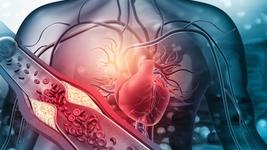CMN Weekly (19 August 2022) - Your Weekly CRISPR Medicine News
By: Gorm Palmgren - Aug. 19, 2022
Top picks
- Ultra-deep sequencing validates the safety of CRISPR-Cas9 genome editing in human hematopoietic stem and progenitor cells (HSPCs). An American study used electroporation of Cas9 and gRNAs targeting three loci (AAVS1, HBB, and ZFPM2) and harvested genomic DNA on days 4 and 10. Results showed that gene editing does not introduce or enrich tumorigenic variants and that even a single SNP in a gRNA spacer sequence is sufficient to eliminate Cas9 off-target activity in primary, repair-competent human HSPCs.
- American researchers have used cytosine base editing (CBE) to create 7CAR8, a quadruple-edited Chimeric antigen receptor T (CAR T) cell line targeting CD7, designed for allogeneic use. CBEs install C•G to T•A point mutations in T cells and silence gene expression with 90% to 99% efficiency. Unlike CRISPR-Cas9 - which induces DNA double-stranded breaks (DSBs) - CBE does not impact T-cell proliferation, lead to aberrant DNA damage response pathway activation, or result in karyotypic abnormalities following multiplexed editing.
Research
- i-CRISPR is a new personalised cancer therapy strategy that adds DNA damage repair inhibitors and induces cancer cell-specific DNA double-strand breaks by CRISPR. In vitro and in vivo experiments confirmed the method's efficacy in multiple cancer models.
- Another cancer therapy strategy utilises CRISPR-Cas9 to knock out the neoplasm-related HO-1 gene in T47D breast cancer cell lines. Proliferation was significantly reduced, while sensitivity to the cytotoxic drug Cisplatin was increased considerably.
- Colocalisation of dual-engineered CRISPR probes (CoDEC) is used in a new and facile way for visualising single-nucleotide variations (SNVs) in a nuclear genome. The method allows for studying in situ information on SNVs in individual cells for basic research and clinical applications with single-molecule and single-nucleotide resolutions.
- CRISPR-Cas13 RNA endonucleases show promise for programmable RNA knockdown, but Cas13d collateral activity can be challenging to control in a therapeutic context. A new study introduces an adeno-associated virus-compatible strategy. GENO leverages guide RNA processing to control Cas13d expression by negative autoregulation.
- American researchers demonstrate a high-throughput robotics system to screen hundreds of candidate crRNAs for activation of Cas13a collateral RNA cleavage. The method tests for possible effects, including crRNA/target sequence, size and secondary structures, and the commercial source of DNA oligomers used to generate crRNAs.
- Researchers in China describe a dual-specific CRISPR-Cas nanosystem for precision therapeutic editing of liver disorders. The system combines liver-targeted delivery and liver-specific editing to precisely treat inflammatory liver diseases. Specific targeting to inflammatory lesions in the liver was achieved by coating nanocomplexes with a layer of biomimetic macrophage membrane. Using the synthetic P3 promoter in plasmids encoding Cas9 or CasRx further ensures liver-specific expression.
- In vivo and in vitro studies in a mouse model of Huntington's disease demonstrate the potential for CRISPR base editors to regulate the expression of the human huntingtin (HTT) gene. Base editing led to a marked reduction in HTT gene expression in cell populations and a potent decrease in HTT mRNA in striatal neurons in live mice.
Industry
- Graphite Bio has dosed its first patient with the investigational gene editing therapy nula-cel for the treatment of sickle cell disease (SCD). Nula-cel, previously called GPH101, is a next-generation gene-editing autologous hematopoietic stem cell (HSC) therapy designed to correct the genetic mutation that causes SCD directly.
- Gracell Biotechnologies has reported second-quarter financial results, indicating $255 million in cash and cash equivalents and a net loss of $21.8 million. In addition, R&D expenses amounted to $17.5 million. The company also provided a corporate outlook, including updated clinical results.
- Gamida Cell also reported second-quarter financial results and provided a company update. Net loss was $18.6 million, and total cash, cash equivalents and investments amounted to $55.1 million.
Detection
- Chinese researchers report an ultrasensitive CRISPR-Cas12a-based electrochemical SARS-CoV-2 detection system with a detection limit as low as 0.27 copy/μL. The method employs an electrochemical biosensor, dubbed CRISPR-SPCE, in which the CRISPR ssDNA reporter was immobilised onto a screen-printed carbon electrode.
- A new CRISPR-based system to detect non-nucleic acid targets is described. It utilises unique DNA nanostructures to activate Cas12a and release an electrochemiluminescence (ECL) signal. The Y-shaped DNA nanostructures assembled-spherical nucleic acids functioned as target converters in the presence of AMACR, a highly specific protein biomarker of prostate cancer.
- A new platform for miRNA detection uses bis-enzyme cascade, T7 RNA polymerase and CRISPR-Cas12a. The biosensor achieves all-in-one detection for miRNA and can realise fast and convenient detection of miRNA.
Reviews
- Chinese researchers look at the current landscape of gene-editing technology in biomedicine. The review summarises the meaningful applications of CRISPR technologies in preclinical studies, focusing on the establishment of disease models and diagnostic techniques. Moreover, it provides a comprehensive overview of gene-editing attempts for treating various human diseases.
- A review by Chinese researchers highlights the implications and challenges of CRISPR-dCas9 for hepatic fibrosis therapy. Special attention is paid to significant structural variants at on-target, off-target sites and targeted delivery efficiency.
Perspectives and opinion
- The New York Times Magazine brings an interview with Jennifer Doudna. The article is entitled "Her Discovery Changed the World. How Does She Think We Should Use It?"
- CRISPR Ethics is the title of a 35 minutes video podcast hosted and produced by Kira Dineen. This week's guest is Dr Sam Sternberg, who explores the biology of CRISPR-Cas systems and transposable elements, and develops these systems for genome engineering.
News from CRISPR Medicine News
- Wednesday, we brought an interview with Verve Therapeutics’ CEO, Sekar Kathiresan. His company recently announced the first human dosing with VERVE-101 - an investigational base-editing therapy designed to treat heterozygous familial hypercholesterolemia. VERVE-101 is the first in vivo base-editing therapy to reach human clinical trials. In the article, Sekar Kathiresan discusses VERVE-101 and how it may transform the lives of individuals with cardiovascular disease.
To get more of the CRISPR Medicine News delivered to your inbox, sign up to the free weekly CMN Newsletter here.
Tags
CLINICAL TRIALS
IND Enabling
Phase I
Phase II
Phase III
Gastric Cancer and Colorectal Cancer, CRC, (NCT07166263)
Sponsors:
Base Therapeutics (Shanghai) Co., Ltd.
Sponsors:
Base Therapeutics (Shanghai) Co., Ltd.
IND Enabling
Phase I
Phase II
Phase III
Relapsed or Refractory Acute Myeloid Leukemia, AML, (NCT06541444)
Sponsors:
Base Therapeutics (Shanghai) Co., Ltd.
Sponsors:
Base Therapeutics (Shanghai) Co., Ltd.
IND Enabling
Phase I
Phase II
Phase III







